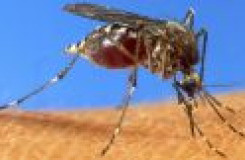 12 Terms
12 TermsHome > Terms > English, UK (UE) > West Nile virus
West Nile virus
A mosquito-borne zoonotic arbovirus belonging to the genus Flavivirus in the family Flaviviridae. This flavivirus is found in temperate and tropical regions of the world. It was first identified in the West Nile subregion in the East African nation of Uganda in 1937. Prior to the mid 1990s, WNV disease occurred only sporadically and was considered a minor risk for humans, until an outbreak in Algeria in 1994, with cases of WNV-caused encephalitis, and the first large outbreak in Romania in 1996, with a high number of cases with neuroinvasive disease. WNV has now spread globally, with the first case in the Western Hemisphere being identified in New York City in 1999; over the next 5 years, the virus spread across the continental United States, north into Canada, and southward into the Caribbean Islands and Latin America. WNV also spread to Europe, beyond the Mediterranean Basin new strain of the virus was recently (2012) identified in Italy. WNV is now considered to be an endemic pathogen in Africa, Asia, Australia, the Middle East, Europe and in the United States, which in 2012 has experienced one of its worst epidemics.
The main mode of WNV transmission is via various species of mosquitoes which are the prime vector, with birds being the most commonly infected animal and serving as the prime reservoir host - especially passerines which are of the largest order (Passeriformes) of birds. WNV has been found in various species of ticks, but current research suggests they are not important vectors of the virus. WNV also infects various mammal species, including humans, and has been identified in reptilian species, including alligators and crocodiles, and also in amphibians. Not all animal species which are susceptible to WNV infection – humans included, and not all bird species develop sufficient viral levels to transmit the disease to uninfected mosquitoes, and are thus not considered major factors in WNV transmission.
Approximately 80% of West Nile virus infections in humans are subclinical, which cause no symptoms. In the cases where symptoms do occur – termed West Nile fever in cases without neurological disease – the time from infection to the appearance of symptoms (incubation period) is typically between 2 and 15 days. Symptoms may include fever, headaches, fatigue, muscle pain or aches, malaise, nausea, anorexia, vomiting, myalgias and rash. Less than 1% of the cases are severe and result in neurological disease when the central nervous system is affected. People of advanced age, the very young, or those with immunosuppression, either medically induced, such as those taking immunosupressive drugs, or due to a pre-existing medical condition such as HIV infection, are most susceptible. The specific neurological diseases which may occur are West Nile encephalitis, which causes inflammation of the brain, West Nile meningitis, which causes inflammation of the meninges which are the protective membranes that cover the brain and spinal cord, West Nile meningoencephalitis, which causes inflammation of the brain and also the meninges surrounding it, and West Nile poliomyelitis - spinal cord inflammation which results in a syndrome similar to polio, which may cause acute flaccid paralysis.
- Part of Speech: proper noun
- Synonym(s):
- Blossary:
- Industry/Domain: Health care
- Category: Viruses
- Company:
- Product:
- Acronym-Abbreviation:
Other Languages:
Member comments
Terms in the News
Featured Terms
Fraternal polyandry
Marriage of one woman with a set of brothers.
Contributor
Featured blossaries
Browers Terms By Category
- Radiology equipment(1356)
- OBGYN equipment(397)
- Cardiac supplies(297)
- Clinical trials(199)
- Ultrasonic & optical equipment(61)
- Physical therapy equipment(42)
Medical devices(2427) Terms
- Wedding gowns(129)
- Wedding cake(34)
- Grooms(34)
- Wedding florals(25)
- Royal wedding(21)
- Honeymoons(5)
Weddings(254) Terms
- Advertising(244)
- Event(2)
Marketing(246) Terms
- Cardboard boxes(1)
- Wrapping paper(1)
Paper packaging(2) Terms
- Natural gas(4949)
- Coal(2541)
- Petrol(2335)
- Energy efficiency(1411)
- Nuclear energy(565)
- Energy trade(526)





